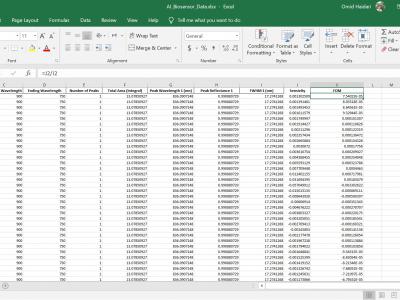Machine Learning
The Fuyong dataset records 134 stroke patients who received treatment in the Shenzhen Fuyong People's Hospital between March 1, 2022, and September 31, 2024. Besides, medical records of 435 stroke patients treated in the Affiliated Taizhou People's Hospital of Nanjing Medical University between January 1, 2020, and December 31, 2023, are included in the Taizhou dataset. These two datasets use the pre- and post-thrombolysis of the NIHSS scores as a metric for evaluating the immediate efficacy of the thrombolytic intervention.
- Categories:
 210 Views
210 Views
This dataset supports the LookCursor AI project, which implements eye-tracking-based cursor control using OpenCV and Dlib. The primary file included is shape_predictor_68_face_landmarks.dat, a pre-trained model used to detect and map 68 facial landmarks essential for tracking eye movements. The dataset enables accurate facial feature detection, which is critical for cursor movement based on eye gaze.
- Categories:
 95 Views
95 ViewsThe AMD3IR dataset is a large-scale collection of Shortwave Infrared (SWIR) and Longwave Infrared (LWIR) images, designed to advance the ongoing research in the field of drone detection and tracking. It efficiently addresses key challenges such as detecting and distinguishing small airborne objects, differentiating drones from background clutter, and overcoming visibility limitations present in conventional imaging. The dataset comprises 20,865 SWIR images with 24,994 annotated drones and 8,696 LWIR images with 10,400 annotated drones, featuring various UAV models.
- Categories:
 551 Views
551 Views
A significant challenge in racing-related research is the lack of publicly available datasets containing raw images with corresponding annotations for the downstream task. In this paper, we introduce RoRaTrack, a novel dataset that contains annotated multi-camera image data from racing scenarios for track detection. The data is collected on a Dallara AV-21 at a racing circuit in Indiana, in collaboration with the Indy Autonomous Challenge (IAC).
- Categories:
 27 Views
27 ViewsThe proposed method is rigorously evaluated against several state-of-the-art algorithms, including ISAC, ITD3, IPPO, and IDDPG, to ensure a comprehensive performance analysis. The experimental data, which is publicly available [here], provides detailed insights into the training and evaluation processes of each algorithm.
- Categories:
 149 Views
149 Views
Dataset Description
This dataset is designed for analyzing and predicting comeback victories in Multiplayer Online Battle Arena (MOBA) games. It is derived from match data where an objective bounty mechanism was active, providing features that highlight differences between teams with and without the bounty advantage. The dataset is ideal for machine learning tasks, such as binary classification and feature importance analysis, and it enables researchers and analysts to explore factors influencing comeback scenarios in competitive gaming.
Dataset Contents:
- Categories:
 84 Views
84 ViewsComprehensive dataset (5000 spectra) of simulated grating biosensor reflections in Excel format. Generated via Lumerical FDTD, it includes 11 parameters (thickness, RI, peak wavelength, FWHM, reflectance, etc.). It is ideal for data visualization, sensor response exploration, and AI/ML benchmarking. The full dataset in Excel format is coming soon! Follow this repository to be notified when it's released. In the meantime, feel free to browse the README for more information about the project.
- Categories:
 321 Views
321 ViewsDLSF is the first dedicated dataset for Text-Image Synchronization Forgery (TISF) in multimodal media. The source data for this dataset is scraped from the Chinese news aggregation platform, Toutiao. This dataset includes extensive text, image, and audio-video data from news articles involving politicians and celebrities, featuring samples of both entity-level and attribute-level TISF. It provides comprehensive annotations, including labels for text-image authenticity, types of TISF, image forgery regions, and text forgery tokens.
- Categories:
 107 Views
107 Views





